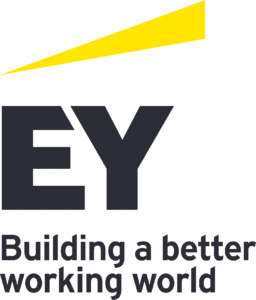Ernst & Young LLP (EY) and SAP create and deliver innovative solutions to help clients transform their enterprise and fuel business performance. Now more than ever, there is an opportunity for organizations to reframe their future through a fresh lens of industry-focused value drivers.
With deep industry knowledge and a commitment to value realization, the SAP partner ecosystem is critical to the success of the chemical industry. SAP partners help customers of all sizes, in countries worldwide take advantage of SAP’s innovative solutions, simplify their business processes, and orchestrate the Intelligent Enterprise. To bring this perspective to the SAP community in the chemical industry, we are continuing with the fifth edition of the Chemical Industry Partner Stage series.
The chemical industry is undergoing a structural transformation with macroeconomic supply chain challenges and post-COVID-19 business impacts. Chemical companies are under pressure to:
- Adapt to customer demands and delivery commitments
- Address the effects of commoditization and the emergence of new competition that have arisen through mergers, divestitures, and acquisitions
- Manage disruptive changes from digitization or feedstock shifts
Chemical companies need to accelerate positive change, from fast-tracking the adoption of intelligent technology and new ways of working to pivoting quickly to evolve with changing consumer expectations while creating more engaging experiences for employees. Enterprise transformation is ever more critical to creating sustained value. The journey to a cloud-led architecture can allow companies to achieve their sustainability targets and long-term value faster.
We spoke with Kevin Jinks, managing director at EY, to learn more.
Q: When you talk to chemical customers, what excites you about the chemical industry?
A: Our clients are investing in their businesses and innovating through expanding products and solutions, as well as heavily investing in business transformation journeys. As we meet with industry clients, we see firms focusing on operational efficiencies, dealing with pricing pressures and looking for ways to change their profiles. Companies are also looking at asset optimization and customer engagement models, including touchless ordering.
What’s exciting to us is how we are engaging with clients on their business initiatives and supporting their transformations. This is exciting when you consider how these investments have been historically viewed. All of these ideas translate into large-scale programs that are enabled by technology. A prime example of this effort is SAP S/4HANA, which aligns well with our clients’ strategies to leverage their SAP industry capabilities, specifically SAP S/4HANA Chemicals.
Certainly, the pandemic has impacted all industries, including chemicals. But, in some segments, we have actually seen significant business improvement through COVID-19. As the broader economy continues to recover and evolve, chemical companies will look for additional ways to do business differently and remotely and deliver business value in a more touchless fashion. We also expect to see considerable activity around dealmaking, including mergers, acquisitions, and divestitures. It is an exciting time for the chemical industry, which is something I may not have said five years ago.
Looking forward, what do you see as some of the top priorities and opportunities for chemical customers?
Right now, there is a lot of discussion among industry leaders about getting back to the core capabilities and enabling business strategies. So, if you have a business unit that doesn’t align well with that company’s core function or core capabilities, the conversation turns to potential divestiture options. At the same time, companies are looking to acquire and strengthen their cores to support growth opportunities in the market. If it’s a strategy that helps the business more effectively optimize its assets, chemical companies are looking at it. EY and SAP are well positioned to do this from a business and technology perspective.
Another priority in the industry is the notion of getting closer to customers and developing that capability of serving in a more touchless environment, which, at least in part, is being driven by capacity issues. How do you prioritize capacity that is limited? How do you find ways to increase margin in a business that is typically under price pressure? Companies are utilizing technology to answer these questions and craft a plan that maximizes their capabilities.
Chemical companies also need to recognize that the transition to the cloud is more than merely lifting and shifting assets from on-premise to the cloud. The transition requires a systematic, strategic approach to a well-designed solution that enables companies to achieve true value. EY has found success in helping clients quickly deploy SAP on Microsoft Azure by building strategies, architecting transformations, and enabling a customized, secure, and optimized cloud solution. Finally, with a new administration in the White House, regulations in the United States will likely change, and environmental, social, and governance (ESG) concerns will become key talking points as companies evaluate the future. EY has emphasized the importance of ESG in its own practices and is working to help clients do the same.
How has technology changed the way chemical companies operate?
You can find examples in the chemical industry where technology that wasn’t available even just a few years ago is now providing a great deal of benefit. For example, commodities firms are using advanced analytics and AI to predict future pricing. These findings can inform decisions about when to make a buy and when to defer until pricing gets better, and they can also be integrated into a company’s global procurement model. The savings that this is driving can be significant.
Digital technology, such as an enterprise resource planning (ERP) back-end program, is helping to bring efficiency to both the process and the model itself to help reduce costs and achieve desired fulfillment rates. There are several buckets of digital and technology that are happening in chemicals, which is quite impressive to see.
When we talk to chemical industry customers, big or small, change management is a key pillar of digital transformation. How are companies embracing these changes and equipping their teams for success?
Many of our clients underestimate the damage that can be done when change management is not done well. An expression I like to use is, “The soft stuff is the hard stuff. The technology works.” What I mean by that statement is that SAP software – the configuration and the industry capabilities within the software – is proven. There may be some processes that require customer-specific extensions. However, a failure to get executive alignment, business buy-in, and project team commitment on the change agenda can wreak havoc, negatively impacting production, fulfillment rates, and customers.
Unfortunately, project teams often undervalue and minimize project budgets and investments, inadvertently creating substantial risk.
As we look at transformation, there is a lot of momentum in the market around industry templates that are pre-built. The idea is that if you use these templates, the process model is already built and the business will adopt it. That approach can work very well if it’s done right. However, change management is an area that actually gets harder because it requires an organization to adapt to fit what the software is already configured to do. No prebuilt solution will yield a 100% fit, and an organization’s business differentiation will not be there either. Instead, clients should be working with their service partners to focus on how their differentiated processes will work while adopting common non-differentiated ones. They should also ensure that everyone who needs to be involved in the effort has visibility into what’s happening. Take steps to ensure that industry skill and knowledge are coming to life in your solution.
Why team with EY?
We have strong business acumen and experience in performing business-driven insights and analysis that help define where companies are struggling and the experience that is needed to design future-enabled solutions. Our strengths and differentiators are our business-led, process-driven, and technology-enabled perspectives. The depth and breadth of our global scale is more than I think clients realize, since many view EY as strictly an accounting firm.
How does EY create value for the chemical industry and how can people connect with you?
Our experience is that every client has different business priorities, value drivers, and performance and business objectives. That said, common value creation opportunities often center on supply chain planning, customer segmentation, and commodity pricing, to name a few. We start with building a business-aligned case for change that defines benefits and opportunities based on unique needs and goals.
We recently worked with a client where we quickly identified benefit areas and opportunities to capture value. Where we are looking at the potential to drive significant value, we’ll engage strong industry subject-matter resources that work together with our clients to align business, process, data, and technology needs; address their issues; and help realize that value. It’s providing a complete picture of what that company can achieve and provide the vision and road map to achieve it.
As far as connecting with me, I’m a pretty active member on some of the social media portals, such as LinkedIn. You can also go to our website or email me at kevin.jinks@ey.com.
Looking to stay connected with the chemical Industry? Please join the SAP Chemical Industry community on LinkedIn, follow us on Twitter @SAPChemicals, and check out our SAP Community page.
![]()
SAP is a leader in the chemical industry, and we are committed to continuous innovation. We encourage you to collaborate with us and discuss how the SAP solution portfolio can enable the Intelligent Enterprise in the chemical industry.
Dr. Lauren McCallum is SAP Chemical Industry Business Unit solution manager.
The views expressed by the author are not necessarily those of Ernst & Young LLP or other members of the global EY organization.




